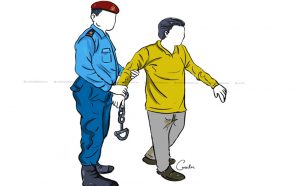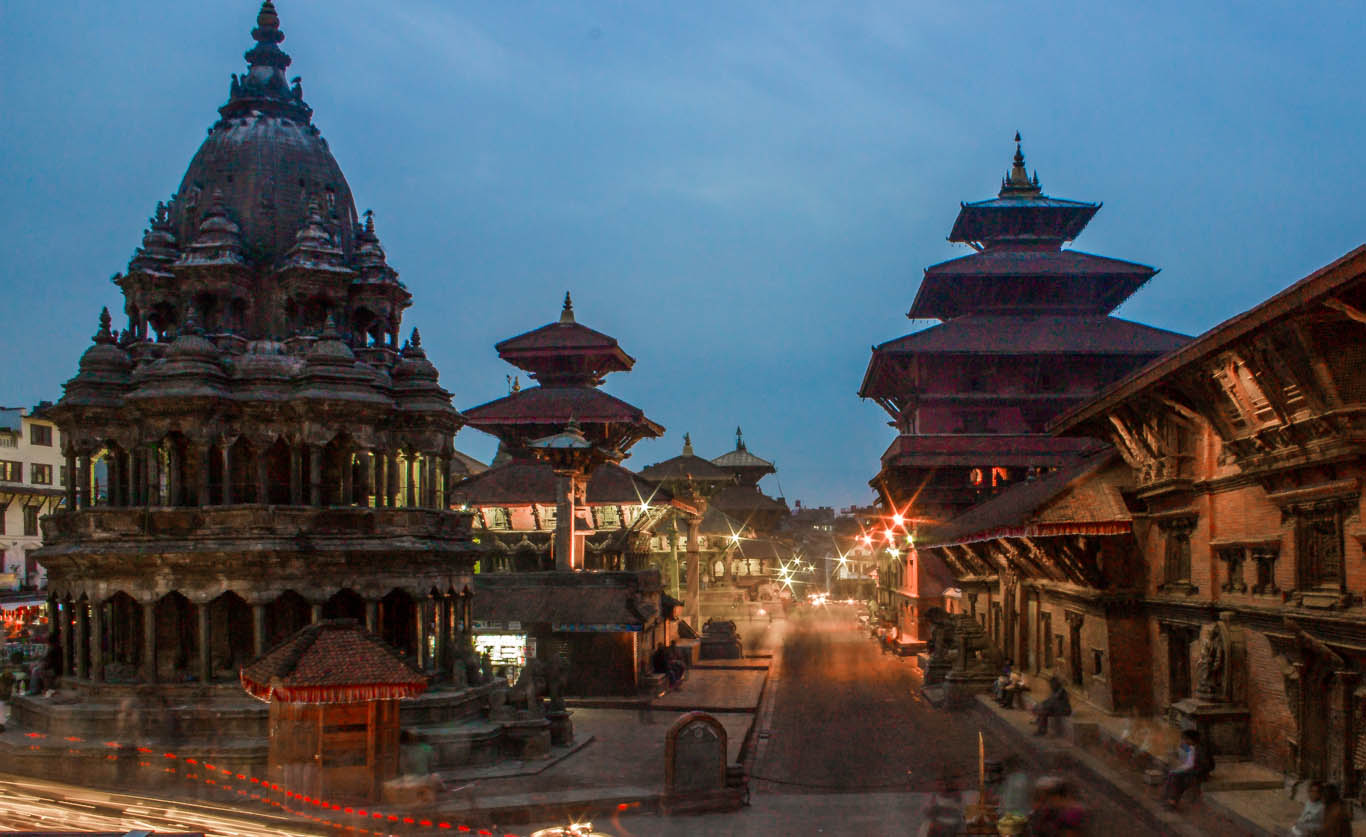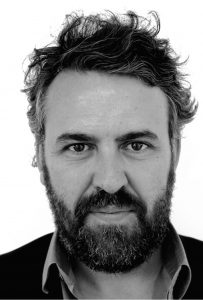
Walking through a gully at Sundhara for about five minutes, you reach the ‘Polish quarters’ (my coinage), where artists representing Poland at the Kathmandu Triennale 2017 have been residing.
No, they have not been living there as some isolated isle. They have been soaking in cultures, festivals and artistic traditions of the locals and teaching the locals, especially young children, the fundamentals of contemporary art.
So, when Kris Lukomski of the Polish team and I arrived at a spacious square, leaving behind the rhythmic sound of the hammer hitting the metal surface repeatedly (perhaps the craftsmen were making hearts of some giant deities and they were already coming to life!), it was all quiet, with little children drawing whatever they liked on a piece of yellow cloth. This creation will feature in the exhibition the Polish team is organising at the neighbourhood on March 27 at 2:30 pm. (For heaven’s sake, please mark the date and be there on that day at Sundhara to witness the wonderful display of artworks through multimedia).
According to a team member, these children are creative. She says: “In Europe, toys have killed children’s creativity. Here, children are enthusiastic, they are hungry for knowledge.”
That’s indeed some solace for a society that is trying to rise from the rubble of last year’s quakes, where decaying, old houses are standing courageously with help from wooden poles. Another team member says they are trying to create a garden on a sliver of land by the side of the square and plan to grow flowers and some vegetables. That will be some organic art on display! Who said art has to be artificial anyway? Who said art has to be extravagant? And who said art should not be a part of everyday life?
After interacting with art instructors and their students and seeing their wonderful artworks, Professor Piotr Kurka joins us and we head to his home away from home for a conversation with him and Kris.
We enter the peacefully lit ground floor of a beautiful house made of Teliya bricks and wood. This reminds me of beautiful traditional houses that once used to be a feature of Kathmandu. After flights of wooden stairs, we reach atop the house offering a beautiful view of Lalitpur, the city of fine arts, and beyond for a deep breath and conversation on arts and artscape. Excerpts from the conversation:
The itinerary
Kris Lukomski: The Polish team will be working together with the local community in Sundhara, Patan. Our programme includes a series of workshops, lectures, presentations, community-based activities that happened in a few yards and a few private houses. These activities will result in a final event on at 2.30 pm on March 27 with three guided tours at 3, 4 and 5 pm and special sunset guided tour at 6 pm. “We welcome everyone to join us”.
Piotr Kurka: We have famous photos from famous photographers. We obliged children to repeat some compositions. You know everyone has smartphones these days, but not everybody knows how to compose images, not everybody knows about vertical, horizontal orientation. As I told you earlier, we spent three hours at a school, they (the children) wanted to learn Nepali songs, we showed them Polish songs too. I told them about the importance of repetition. I used mantras as the symbol of repetition. This is a kind of teaching by analogies, things they could refer to in reality. We are very open for collaboration with people.
We have no strict plan of what to do. It will be kind of workshop, which will facilitate an exchange of ideas.
Kris: There are a lot of spontaneous situations we face while working with local people. Yesterday, we were part of a parade. We put on Newari suits and went door to door, got to know the entire community. This was a unique experience. We were not just foreigners, who would drop in for a day and go away the next day. We are going somewhere, working directly with the people….. We will be working here on videos, performances. The most important thing is we meet people in their own contexts and circumstances.
We are working with the people, living in their private houses, we call art a journey. We are going somewhere, working with people and some artworks will be borne out of this experience. From our point of view, this is the most important goal. The most important thing is we really got to meet people in their own circumstances. The language of visual art is confusing too. Sometimes, people do not understand it. That makes it more interesting.
Sometimes, art is complex for ordinary minds. But that (making art complex) is not what we are trying to do here. We are working with the community. People think they don’t understand contemporary art. The community art practice is located on the streets. This is something that involves local people. Here we work for the community. Quite often, people feel contemporary art is some meta-language, which they do not understand. But we are trying to bring the art to the people through community art practices located in public zones like streets.
Art and big institutions
Kris: Art represents something and something is represented by institutions (galleries, big museums, etc). We are not trying to oppose these institutions, we are not trying to fight them. We are trying to do something else. It’s bringing art experiences, activities and art methodologies to the people, who feel very confused about contemporary art. Institutions are necessary. But they are one side of the whole sector of possibilities. Working with people, knowing their culture is also a great opportunity for us. In course of interacting with people, we are also learning something from the people, with whom we work every day, not just from experts and scholars. People think art is hard to understand. We are trying to bring art to them. In our case, it’s something that involves local people. They are closer to art.
Piotr: Market has a very wild system. They don’t care about ethic, morality, etc. We can make good things through arts. We try to focus on raising awareness, on things which are not visible on the first watching.
Kris: Art itself should not be seen from the perspective of institutions. It does not mean that art should be market-oriented only. It should also be more ethical and philosophical. In Patan, there’s a strong artistic tradition…..
About the host community
Kris: First of all, they are so open and they invited artists from a very faraway country to live in their private houses and this is a unique thing. Being honest with you, this is something that does not generally happen in Europe, with the same amount of hospitality. People here are open to understanding that art activities and experiences are not something that should necessarily result in some big artwork, they are not something that we have to finish for the opening or something. It’s a process-based concept, every little detail, everyday experience is also counted as artistic experience. Mutual learning, communication, even without words sometimes, also count. There are Nepali artists, who help us….. Being a part of the community is important. We have had a strong impact on their artworks and they had on ours. We managed to visit craftsmen, workshops….. We are not going to bring any revolutionary statement here. What is important is that we will use houses, streets and roofs in Patan for our collective experience (on March 27). It’s challenging thing to do but that is what brings quite honest and authentic sharing.





















